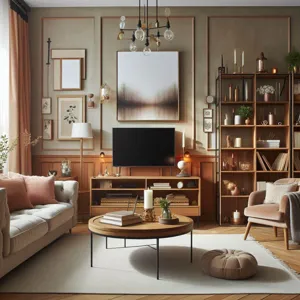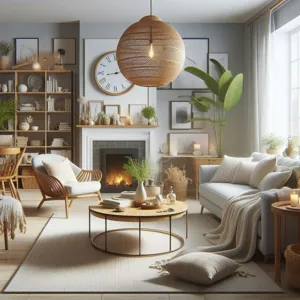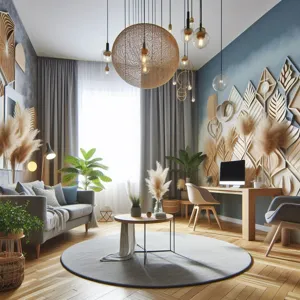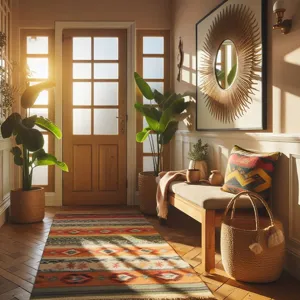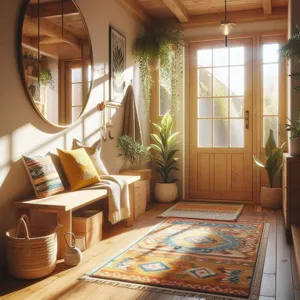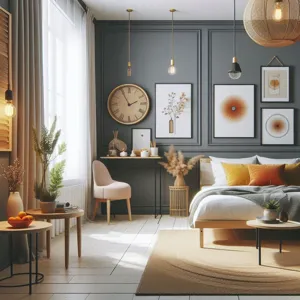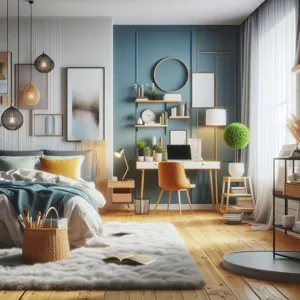Long commutes can often feel like an endless slog through traffic, draining your energy before the day has even begun or leaving you exhausted by the time you finally arrive home.
However, the right car can transform this daily grind into a more enjoyable experience, turning the journey into a time for relaxation, entertainment, or productivity. In this post, we’ll explore the top 10 cars that not only boast comfort and style but also come equipped with features designed to make long drives feel shorter and more pleasant. From advanced infotainment systems and plush seating to impressive fuel efficiency and smooth handling, these vehicles offer a perfect blend of functionality and luxury, ensuring that your commute is something you can actually look forward to. Buckle up and get ready to discover the ultimate ride for your daily travels!
1. Introduction: The Importance of Comfort During Long Commutes

In today’s fast-paced world, long commutes have become an unavoidable part of many people’s daily routines. Whether you’re navigating through bustling city streets or cruising down quiet highways, the vehicle you choose can significantly impact your comfort and overall experience during these extended travels. With hours spent in traffic or on the open road, comfort is paramount—not just for your physical well-being, but also for your mental state.
Imagine settling into a vehicle that embraces you with plush seating, offers a serene cabin environment, and features advanced technology that keeps you entertained and connected. The right car can transform an otherwise tedious journey into a pleasurable experience, allowing you to arrive at your destination feeling refreshed rather than drained. This is particularly important as we juggle work, family, and personal commitments, making every minute of our day count.
A comfortable car can provide not only ergonomic support, but also an array of features designed to enhance your journey. From soothing climate control to impressive sound systems, the amenities available can help you make the most of your time on the road. In this post, we’ll explore the top 10 cars that excel in comfort and technology, ensuring that your long commutes feel shorter and more enjoyable. Buckle up as we dive into the world of vehicles that blend style, comfort, and functionality, making every mile a delight.
2. Key Features to Look for in a Commuting Car
When it comes to finding the perfect car for long commutes, certain key features can significantly enhance your driving experience and make those seemingly endless hours on the road feel much shorter. Here are the essential attributes to consider:
**1. Comfort and Ergonomics:** Long hours in the car can take a toll on your body, so prioritize models with supportive seating and ample legroom. Look for adjustable seats, lumbar support, and materials that breathe to keep you comfortable throughout your journey. A quiet cabin with minimal road noise also plays a crucial role in reducing fatigue.
**2. Infotainment and Connectivity:** A well-equipped infotainment system can turn your commute into a more enjoyable experience. Look for features like touchscreen navigation, smartphone integration (Apple CarPlay or Android Auto), and Bluetooth connectivity for hands-free calling and music streaming. Voice command functionality can also help you stay focused on the road while accessing your favorite tunes or directions.
**3. Fuel Efficiency:** With rising fuel prices, a car that offers excellent fuel economy is not just a smart financial choice but also a key factor in making long drives more bearable. Opt for hybrid or electric models if you’re looking to save on gas without sacrificing performance.
**4. Safety Features:** A safe car can provide peace of mind during your daily travels. Advanced safety technologies such as adaptive cruise control, lane-keeping assist, collision warning, and blind-spot monitoring can help reduce stress and enhance your overall driving experience.
**5. Storage Space:** Having adequate room for your belongings, whether it’s your work bag, gym gear, or snacks, can keep your car organized and clutter-free. Look for cars with spacious trunks and additional compartments to make your commute more convenient.
**6. Ride Quality:** The way a car handles bumps, potholes, and uneven roads directly affects your comfort level. Test drive vehicles to gauge their suspension systems; a smooth ride can make long commutes feel like a breeze rather than a chore.
With these key features in mind, you’ll be well-equipped to choose a commuting car that not only meets your practical needs but also enhances your daily driving experience. A thoughtful selection can transform your long hours on the road into moments of enjoyment and relaxation, making every commute feel just a little bit shorter.
3. Car #10: [Model Name] – A Blend of Comfort and Efficiency

### 3. Car #10: Honda Accord – A Blend of Comfort and Efficiency
When it comes to long commutes, the Honda Accord stands out as an exceptional choice, seamlessly combining comfort and efficiency in one sleek package. Known for its reliability and spacious interior, the Accord provides a calming sanctuary for drivers navigating through traffic. Its plush seating, with ample legroom for both front and rear passengers, ensures that even the longest journeys feel more like a leisurely drive.
With its well-designed cabin, the Accord is equipped with high-quality materials and an intuitive infotainment system, allowing you to effortlessly connect your smartphone and access your favorite playlists or navigation apps. The sound insulation in the Accord is top-notch, significantly reducing road noise so you can enjoy your music or podcasts without distractions.
In terms of efficiency, the Honda Accord excels with its impressive fuel economy, making it a budget-friendly option for the daily commuter. Whether you choose the standard gasoline model or the hybrid variant, you’ll benefit from a smooth and responsive driving experience that enhances your overall travel comfort.
Additionally, the Accord’s safety features, including adaptive cruise control and lane-keeping assistance, provide an extra layer of confidence while on the road. With these advanced technologies, the car helps to ease the stress of stop-and-go traffic, allowing you to arrive at your destination feeling relaxed and refreshed.
In summary, the Honda Accord is not just a car; it’s an experience designed to make long commutes feel shorter, allowing you to enjoy every moment spent behind the wheel. Whether you’re commuting to work or embarking on a weekend road trip, the Accord proves to be a reliable companion that prioritizes your comfort and efficiency.
4. Car #9: [Model Name] – Innovative Technology for a Smooth Ride
### Car #9: Tesla Model 3 – Innovative Technology for a Smooth Ride
When it comes to redefining the driving experience, the Tesla Model 3 stands at the forefront with its cutting-edge technology and exceptional comfort. As you slide into its minimalist interior, you’ll immediately notice the expansive touchscreen that controls nearly every function of the vehicle, allowing for an intuitive interface that minimizes distractions and maximizes convenience.
One of the standout features of the Model 3 is its Autopilot capabilities, which provide semi-autonomous driving assistance. This means that during those long, monotonous stretches of highway, you can let the car take over while you enjoy the soothing sound of your favorite playlist or catch up on a podcast. The advanced safety features and adaptive cruise control make long commutes not only more manageable but also safer, giving you peace of mind as you navigate through traffic.
The Model 3’s impressive range on a single charge eliminates the anxiety of frequent stops, allowing for a seamless journey. Its electric performance offers instant torque, ensuring that merging into fast-moving lanes or overtaking slower vehicles is an effortless experience. Coupled with its spacious cabin and premium sound system, the Model 3 transforms every commute into a pleasurable escape.
Moreover, Tesla’s over-the-air software updates mean your car is always improving, adding new features and enhancing functionality without needing to visit a dealership. This commitment to innovation ensures that the Model 3 remains a top contender for anyone looking to make long drives feel shorter, offering an exceptional blend of technology, comfort, and performance that’s hard to beat. If you’re in the market for a vehicle that redefines the commuting experience, the Tesla Model 3 is a game-changer.
5. Car #8: [Model Name] – Spacious Interior for Relaxation

### 5. Car #8: Honda Accord – Spacious Interior for Relaxation
When it comes to long commutes, comfort can make all the difference, and the Honda Accord excels in this area with its spacious interior that invites relaxation. From the moment you slide into the cabin, you’re greeted by an airy atmosphere, thanks to its thoughtfully designed layout that maximizes legroom and headroom for both the driver and passengers.
The seats are plush and supportive, crafted with high-quality materials that feel luxurious even on the longest journeys. Whether you’re navigating through rush hour traffic or cruising along the highway, the Accord’s spaciousness allows you to stretch out and find your ideal seating position, reducing fatigue and enhancing your overall driving experience.
But it’s not just about space; the Accord also features a premium sound system that allows you to immerse yourself in your favorite tunes or podcasts, transforming your commute into a delightful escape. Additionally, the acoustic glass helps to minimize outside noise, creating a peaceful environment where you can unwind and enjoy the ride.
With its user-friendly infotainment system, you can easily access navigation, music, and hands-free calling, keeping you connected without compromising safety. The Honda Accord truly embodies the perfect blend of comfort, technology, and style, making long commutes feel less like a chore and more like an enjoyable part of your day. Whether you’re commuting for work or embarking on a weekend getaway, this spacious sedan ensures you arrive feeling refreshed and ready to take on whatever awaits.
6. Car #7: [Model Name] – Fuel Efficiency Meets Comfort
### 6. Car #7: Honda Accord – Fuel Efficiency Meets Comfort
The Honda Accord stands out as a beacon of reliability and sophistication, making it an ideal companion for those lengthy commutes. With its sleek, aerodynamic design, the Accord not only turns heads but also cuts through the air with remarkable efficiency. Under the hood, the powerful yet fuel-efficient engine ensures that you can glide through traffic without constantly worrying about your fuel gauge.
Inside, the Accord boasts an impressively spacious cabin adorned with high-quality materials that scream comfort. The plush seating provides ample support for both driver and passengers, making it easy to forget you’re on a long drive. The intuitive infotainment system, equipped with smartphone integration, allows you to stay connected and entertained, turning the mundane into the enjoyable.
Additionally, the Accord’s sound isolation features create a serene environment, muffling the hustle and bustle of the outside world. This car is designed with ergonomics in mind, offering adjustable seating and controls that are easily accessible, ensuring that your journey remains as pleasant as possible. With the Honda Accord, every mile feels shorter, transforming your daily commute into a smooth and enjoyable ride. Whether you’re navigating city streets or cruising down the highway, this car combines fuel efficiency with unparalleled comfort to enhance your driving experience.
7. Car #6: [Model Name] – Premium Sound System for Enjoyable Drives

### 7. Car #6: Audi A6 – Premium Sound System for Enjoyable Drives
When it comes to transforming long commutes into enjoyable journeys, the Audi A6 stands out as a top contender. This luxury sedan seamlessly combines comfort, technology, and a premium sound system that truly elevates the driving experience. The moment you step inside, you are greeted by a refined interior that exudes sophistication—plush leather seating, ambient lighting, and high-quality materials envelop you in an atmosphere of elegance.
What truly sets the A6 apart is its advanced Bang & Olufsen sound system, which boasts 19 speakers and a 1,820-watt amplifier. This premium audio system is engineered to deliver a concert-like experience, making even the longest drives feel shorter as you lose yourself in your favorite tunes. Whether you’re listening to podcasts, audiobooks, or your go-to playlist, the crystal-clear sound quality and rich bass immerse you in a world of audio bliss.
Moreover, the A6’s intuitive infotainment system offers seamless smartphone integration, allowing you to easily access your music and navigation apps without missing a beat. With features such as voice control and a user-friendly touchscreen interface, you can stay connected and entertained while keeping your focus on the road ahead.
With its combination of luxurious comfort and an exceptional sound experience, the Audi A6 ensures that every daily commute is not just a drive, but a delightful escape that makes the miles fly by. So, if you’re looking to enhance your daily grind, this premium sedan could be the perfect companion for your journey.
8. Car #5: [Model Name] – Advanced Safety Features for Stress-Free Travel
### 8. Car #5: Volvo XC90 – Advanced Safety Features for Stress-Free Travel
When it comes to long commutes, the Volvo XC90 stands out not just for its sleek Scandinavian design but also for its unwavering commitment to safety. This midsize luxury SUV is equipped with an array of advanced safety features that can transform even the most tedious drive into a more relaxed and secure experience.
At the heart of the XC90’s impressive safety suite is the renowned Pilot Assist system, which offers semi-autonomous driving capabilities. This feature allows the vehicle to maintain a steady speed and distance from the car ahead while gently steering within its lane. Imagine cruising down the highway, your hands lightly resting on the wheel, while the XC90 does the heavy lifting. This not only eases fatigue during long stretches but also enhances your confidence behind the wheel.
Additionally, the XC90 is outfitted with a comprehensive array of collision avoidance technologies. The City Safety system, for instance, detects potential hazards and can even apply the brakes if necessary, helping to prevent accidents before they happen. With features like blind-spot monitoring and rear cross-traffic alert, you can navigate through busy traffic with peace of mind, knowing that you’re surrounded by layers of protection.
Comfort is another highlight of the XC90, making your commute feel less like a chore and more like an indulgence. Plush, ergonomic seating combined with a spacious interior ensures that both the driver and passengers can stretch out and enjoy the ride. The quiet cabin, enhanced by sound-dampening materials, allows for a serene environment, perfect for listening to your favorite podcast or simply enjoying some peaceful solitude.
In summary, the Volvo XC90 is not just a vehicle; it’s a sanctuary on wheels. With its advanced safety features and comfortable ride, it makes long commutes feel shorter and far more enjoyable. So if you’re seeking a car that prioritizes safety without sacrificing style, the XC90 may just be your ideal commuting companion.
9. Car #4: [Model Name] – Luxurious Amenities for Ultimate Comfort
### 9. Car #4: Lexus ES 350 – Luxurious Amenities for Ultimate Comfort
When it comes to transforming long commutes into a serene escape, the Lexus ES 350 stands out with its exquisite blend of luxury and comfort. As you slide into the plush, leather-wrapped seats, you’ll immediately notice the attention to detail that Lexus is renowned for. The interior is a sanctuary of calm, with soft ambient lighting and high-quality materials that create an inviting atmosphere.
Equipped with an advanced climate control system, the ES 350 ensures that you and your passengers are enveloped in just the right temperature, regardless of the weather outside. The spacious cabin offers ample legroom, allowing you to stretch out and relax during those lengthy drives. With an ultra-quiet ride, road noise is kept at bay, making it easy to enjoy your favorite podcast or unwind with soothing music from the premium sound system.
The car’s impressive suite of technology adds to the overall experience. The intuitive infotainment system includes a large touchscreen display, Apple CarPlay, and Android Auto compatibility, allowing you to seamlessly integrate your smartphone for navigation and entertainment. Plus, the available Mark Levinson audio system transforms your commute into a concert-like experience, filling the cabin with rich, immersive sound.
Safety is also paramount in the Lexus ES 350, featuring a variety of advanced safety technologies that provide peace of mind during your drive. With features such as adaptive cruise control and lane-keeping assist, you can enjoy a more relaxed commute, knowing that the car has your back.
In essence, the Lexus ES 350 redefines what it means to travel in comfort. With its luxurious amenities and cutting-edge technology, this vehicle not only makes long commutes feel shorter but also elevates the entire driving experience, turning the daily grind into a moment of indulgence. Whether you’re heading to work or embarking on a weekend getaway, the ES 350 ensures that every journey is a pleasure.
10. Car #3: [Model Name] – Ergonomic Design for Long Hours
### 10. Car #3: The Mercedes-Benz E-Class – Ergonomic Design for Long Hours
When it comes to making long commutes feel shorter, the Mercedes-Benz E-Class stands out with its remarkable blend of luxury, comfort, and advanced technology. This sedan is meticulously engineered with ergonomic design principles that prioritize driver and passenger well-being, ensuring a fatigue-free experience on your daily drives.
Step inside, and you’ll immediately appreciate the spacious cabin, which features plush, supportive seats crafted from high-quality materials. The E-Class offers a variety of seating adjustments and memory settings, allowing you to find the perfect driving position with ease. The available multi-contour seats come equipped with massage functions, providing a soothing experience that can help alleviate the strain of extended hours on the road.
The interior is designed with an intuitive layout, placing essential controls within easy reach while minimizing distractions. The dual-screen infotainment system not only enhances the aesthetic appeal but also makes navigation and media control a breeze, allowing you to focus on the road ahead. Plus, with features like Apple CarPlay and Android Auto integration, staying connected during your commute has never been easier.
What truly sets the E-Class apart is its commitment to quietness and ride comfort. The advanced sound insulation keeps road noise at bay, creating a serene environment that allows you to unwind or enjoy your favorite podcasts and playlists. Coupled with a smooth, responsive suspension system, the E-Class glides over bumps and potholes, transforming even the most tedious commute into a relaxed journey.
Whether you’re navigating city traffic or cruising on the highway, the Mercedes-Benz E-Class is a car that makes long commutes not only bearable but enjoyable. With its ergonomic design and luxurious features, it’s no wonder this model is a top choice for those seeking comfort and style on their daily drives.
11. Car #2: [Model Name] – Exceptional Handling and Ride Quality
### Car #2: BMW 5 Series – Exceptional Handling and Ride Quality
When it comes to long commutes, the BMW 5 Series stands out as a remarkable option that combines luxury with performance. This executive sedan is celebrated not just for its sleek design but also for the incredible driving experience it offers, making even the longest of journeys feel surprisingly short.
The moment you slide into the plush, leather-clad interior, you’re enveloped in an atmosphere of sophistication and comfort. The seats are ergonomically designed, providing optimal support that keeps fatigue at bay, even during extended drives. The cabin is meticulously crafted, featuring high-quality materials and modern technology that seamlessly integrates with your driving experience.
What truly sets the 5 Series apart is its exceptional handling. The precise steering response and balanced chassis make navigating through traffic or winding roads a joy rather than a chore. Whether you’re accelerating onto the highway or tackling a challenging turn, the 5 Series instills confidence, allowing you to focus on the journey ahead. The adaptive suspension system ensures a smooth ride, absorbing bumps and imperfections in the road with ease, which is a blessing during those long stretches of pavement.
Additionally, the advanced infotainment system provides a wealth of entertainment options, from music streaming to navigation, ensuring that you’re engaged and connected throughout your commute. Whether you’re indulging in your favorite podcast or using the intuitive navigation system to explore new routes, the 5 Series keeps monotony at bay.
In summary, the BMW 5 Series excels in providing a luxurious and dynamic driving experience that turns the daily grind of commuting into a pleasurable escape. With its blend of comfort, handling, and cutting-edge technology, it’s no wonder that this car has earned its place on our list of vehicles that make long commutes feel shorter.
12. Car #1: [Model Name] – The Ultimate Commuting Experience
### Car #1: Tesla Model 3 – The Ultimate Commuting Experience
When it comes to transforming long commutes into a pleasant journey, the Tesla Model 3 stands out as a prime contender. With its sleek design and cutting-edge technology, this electric sedan redefines what it means to travel in comfort and style. The moment you slip into the spacious interior, you’re greeted by a minimalist dashboard that features a stunning 15-inch touchscreen. This central command center controls everything from navigation to music, ensuring that you stay connected and entertained throughout your drive.
One of the standout features of the Tesla Model 3 is its Autopilot capability, which offers semi-autonomous driving assistance. Imagine gliding through heavy traffic while the car takes over the acceleration, braking, and steering, allowing you to relax and reclaim precious moments during your daily grind. The smooth and silent electric drivetrain not only enhances the driving experience but also means fewer distractions from engine noise, making conversations or your favorite podcast easy to enjoy.
Moreover, the Model 3 boasts an impressive range of up to 358 miles on a single charge, alleviating the stress of frequent stops at charging stations. With fast-charging capabilities, you can recharge your vehicle quickly and efficiently, making it a practical choice for those long-distance commutes. Add to that the spacious rear seating and ample trunk space, and you have a vehicle that’s not just about getting from point A to B, but about enjoying every mile along the way.
The Tesla Model 3 is more than just a car; it’s an experience that redefines commuting. Whether you’re navigating city streets or cruising down the highway, this electric marvel ensures that every journey feels short, leaving you refreshed and ready for the day ahead.
13. Tips for Making Any Car Commute More Enjoyable
When it comes to long commutes, the journey can often feel like a monotonous slog through traffic. However, with a few thoughtful adjustments, you can transform your daily drive into a more enjoyable experience. Here are some tips to elevate your commute, regardless of the vehicle you’re in:
1. **Curate Your Playlist or Podcast Library**: Music has the power to elevate your mood, while engaging podcasts can make time fly. Spend some time curating playlists that energize or relax you, depending on your mood. Alternatively, explore the latest episodes of your favorite podcasts or discover new ones that pique your interest.
2. **Audiobooks for Adventure**: If you love to read but struggle to find the time, audiobooks can be the perfect solution. Dive into a gripping novel or explore informative non-fiction while you navigate the roads. It’s a fantastic way to indulge in literature without needing to turn a page.
3. **Practice Mindfulness**: Long commutes can be stressful, but incorporating mindfulness techniques can help you stay calm and focused. Try deep breathing exercises or listen to calming soundscapes to center yourself. This not only enhances your driving experience but also sets a positive tone for your day.
4. **Make the Most of Technology**: Use apps that provide real-time traffic updates to help you find the quickest routes. Apps like Waze or Google Maps can save you time and reduce frustration by guiding you around traffic jams or accidents.
5. **Optimize Your Comfort**: Adjust your seat, climate controls, and steering wheel to ensure maximum comfort. Consider investing in seat covers or cushions that provide extra support during longer drives. A comfortable environment can significantly improve your overall experience.
6. **Plan Your Stops**: If your commute allows for it, identify interesting spots along the way where you can stop for a quick coffee or a stretch. This break can refresh your mind and body, making the long ride feel more manageable.
7. **Connect with Fellow Commuters**: If you carpool, use this time to engage in meaningful conversations with your fellow passengers. Sharing stories, discussing current events, or even swapping commuting tips can enhance your experience and make the drive more enjoyable.
8. **Set a Routine**: Establishing a morning routine that you look forward to can make the commute feel less like a chore. Whether it’s enjoying a favorite breakfast or taking a few moments to meditate before hitting the road, having a ritual can change your perspective.
By implementing these simple yet effective strategies, you can transform your car commute from a tedious task into an enjoyable part of your day. After all, the journey can be just as rewarding as the destination.
14. Conclusion: Choosing the Right Car for Your Commute
When it comes to choosing the right car for your daily commute, the options can be overwhelming. However, the key takeaway from our exploration of the top 10 cars that make long commutes feel shorter is that the right vehicle can transform your time spent on the road into a more enjoyable and productive experience.
Consider factors such as comfort, technology, fuel efficiency, and safety features. The perfect car for your commute should not only accommodate your personal style and preferences but also enhance your driving experience. Whether you prioritize a smooth ride with plush seating, cutting-edge infotainment systems that keep you entertained, or eco-friendly vehicles that save you money at the pump, there is a car out there tailored to your needs.
Moreover, don’t forget about the importance of reliability. A dependable vehicle minimizes the stress of unexpected breakdowns and maintenance issues, allowing you to focus on the road ahead. As you navigate your daily travels, the right car can make every mile feel shorter and every trip more pleasurable.
In the end, the car you choose should not only serve as a means of transportation but also contribute to a positive mindset for your day ahead. So, take your time to evaluate your options, test drive a few contenders, and remember: the right vehicle can turn even the longest of commutes into a journey worth taking.
15. Additional Resources for Commuters: Apps and Gadgets to Enhance Your Drive
In the age of technology, commuting doesn’t have to feel like a chore; it can be transformed into a more enjoyable and productive experience with the right tools at your disposal. Here are some essential apps and gadgets that can enhance your drive, making those long hours on the road feel significantly shorter.
**1. Navigation Apps**
Waze and Google Maps are indispensable for any commuter. Not only do they provide real-time traffic updates, but they also suggest the fastest routes, helping you dodge congestion and arrive at your destination more efficiently. Their ability to reroute based on current traffic conditions can save you precious minutes each day.
**2. Audiobook and Podcast Platforms**
Turn your commute into a learning session or an entertaining escape with platforms like Audible or Spotify. Whether you prefer diving into captivating audiobooks or engaging podcasts, these services can transform your car into a mini-theater, making the time fly by as you immerse yourself in new stories and ideas.
**3. Music Streaming Services**
Sometimes, all you need is the right soundtrack to make the drive feel shorter. Services like Apple Music and Pandora allow you to create custom playlists or discover new tunes that align with your mood, helping you to unwind and enjoy the journey, regardless of how long the traffic jam lasts.
**4. Hands-Free Devices**
Safety should always be a priority, and hands-free devices like Bluetooth headsets or car systems are crucial for staying connected without compromising your focus on the road. Make phone calls, send texts, or even ask your virtual assistant about the weather—all without taking your hands off the wheel.
**5. Driving Companion Apps**
Apps like Carpool World or Scoop help you connect with other commuters in your area, allowing you to share rides and reduce the stress of driving alone. Not only can this save you money on gas, but it can also make the journey more enjoyable with conversation and camaraderie along the way.
**6. Vehicle Maintenance Gadgets**
Invest in a diagnostic tool like the FIXD OBD2 scanner to keep your car in top shape. This handy gadget can help you monitor your vehicle’s health, alerting you to potential issues before they become costly repairs, ensuring you can focus on your commute rather than unexpected breakdowns.
**7. Comfortable Accessories**
Don’t underestimate the power of comfort! Consider investing in ergonomic seat cushions or lumbar supports, which can make a world of difference on those longer drives. Combine these with a good quality phone mount to keep your devices at eye level, and you’ll create a more enjoyable driving environment.
By integrating these apps and gadgets into your commuting routine, you can turn a mundane journey into a more engaging and productive experience. So gear up, buckle in, and get ready to make those long commutes feel a whole lot shorter!
As we wrap up our exploration of the top 10 cars that make long commutes feel shorter, we hope you’ve found inspiration to enhance your daily drive. Each vehicle on our list combines comfort, technology, and performance to transform tedious hours on the road into enjoyable experiences. Whether you prioritize advanced infotainment systems, plush seating, or impressive fuel efficiency, there’s a perfect option waiting for you. Remember, the right car can turn your commute into a time for relaxation, productivity, or even a little adventure. So, keep these recommendations in mind as you embark on your next car search, and elevate your journey every day. Safe travels!









